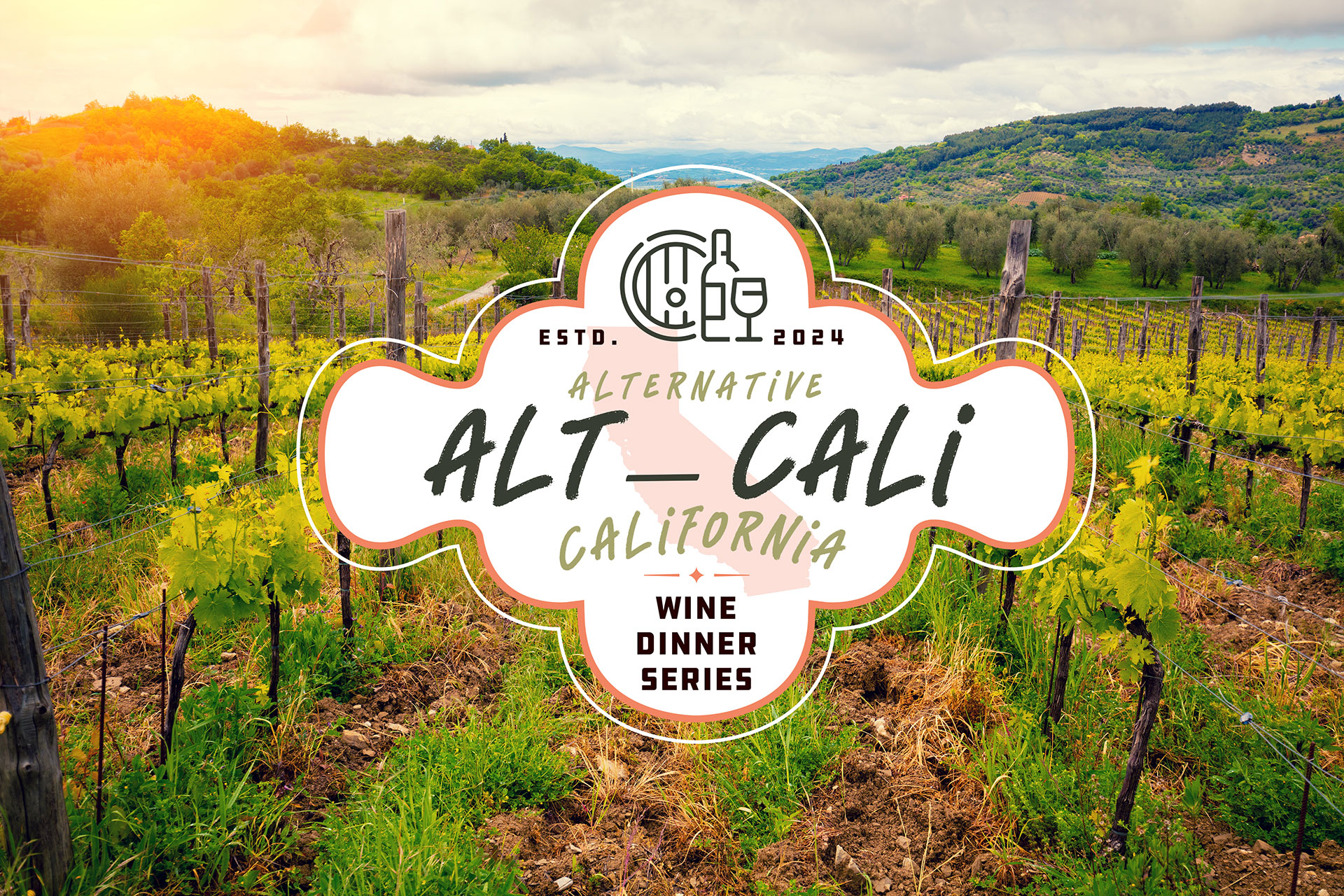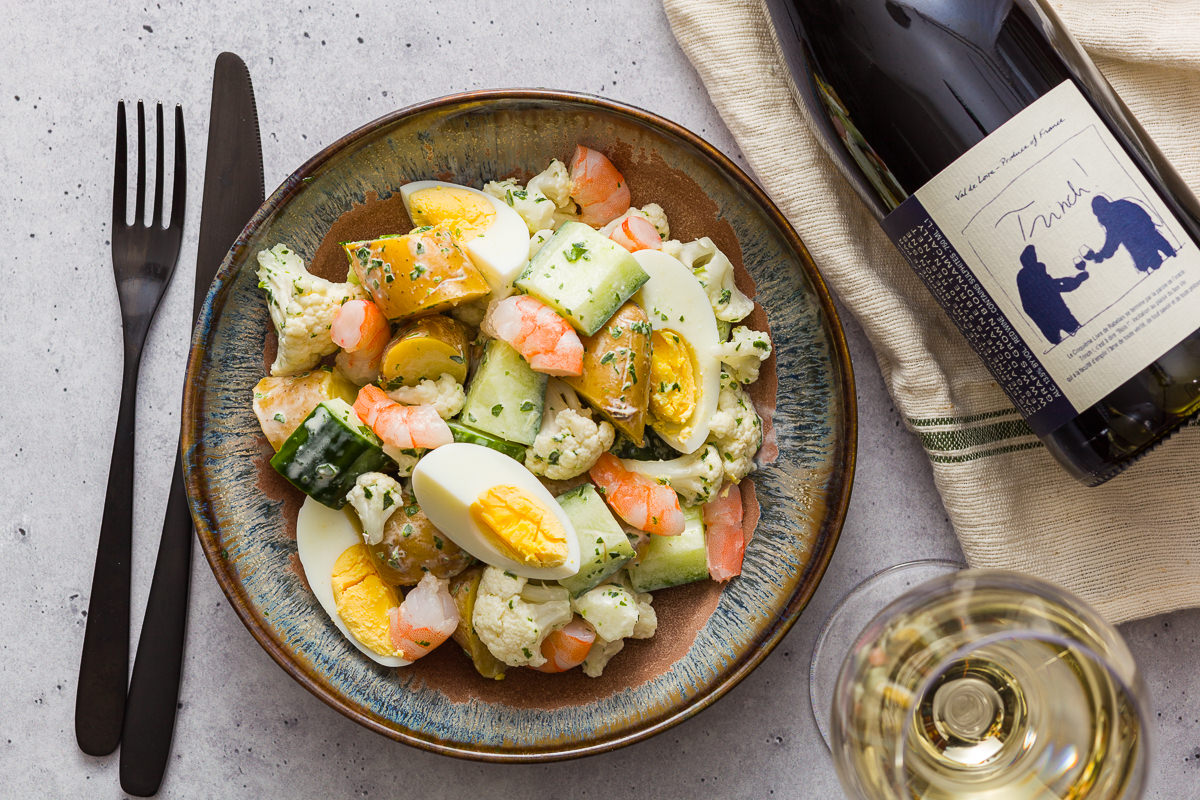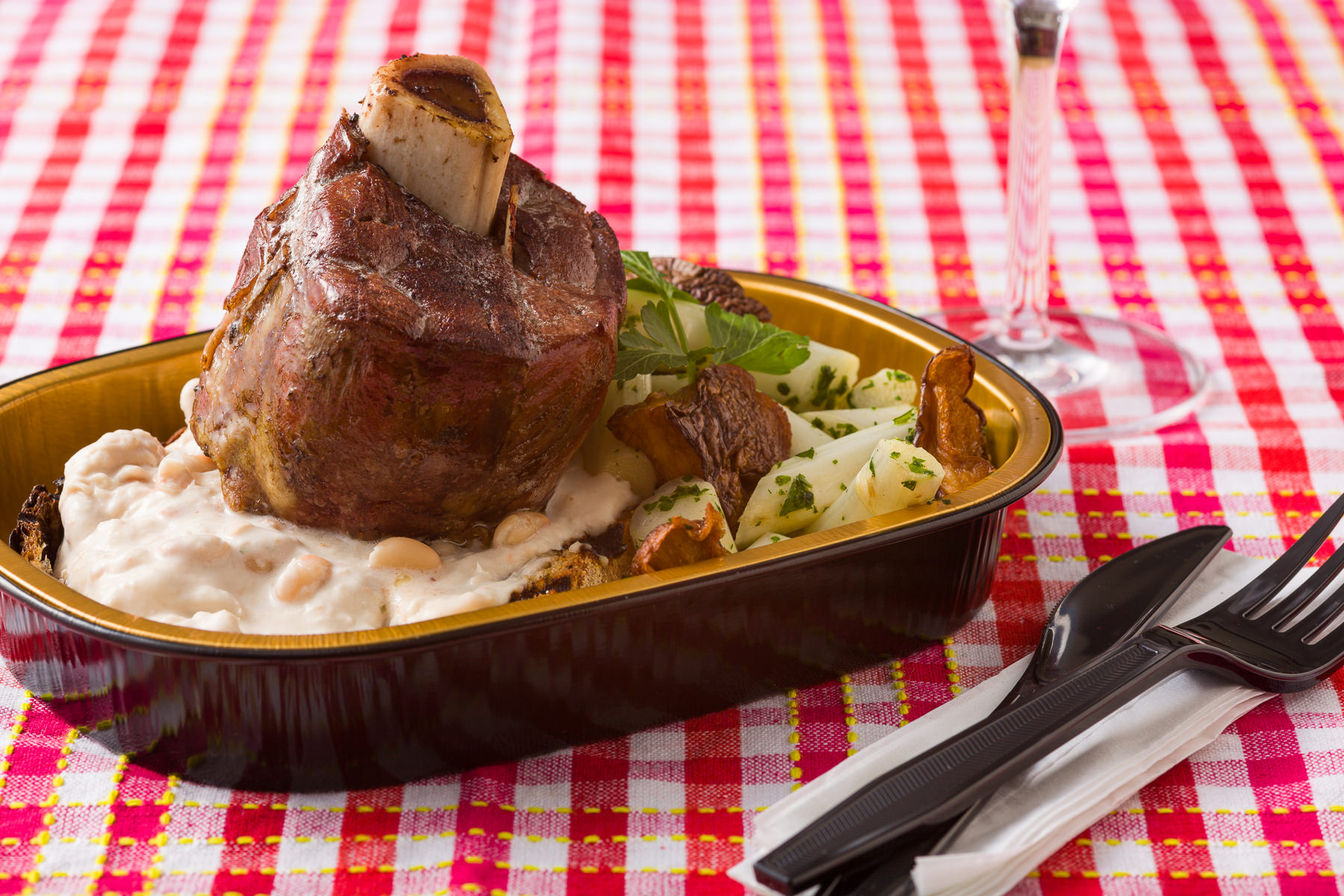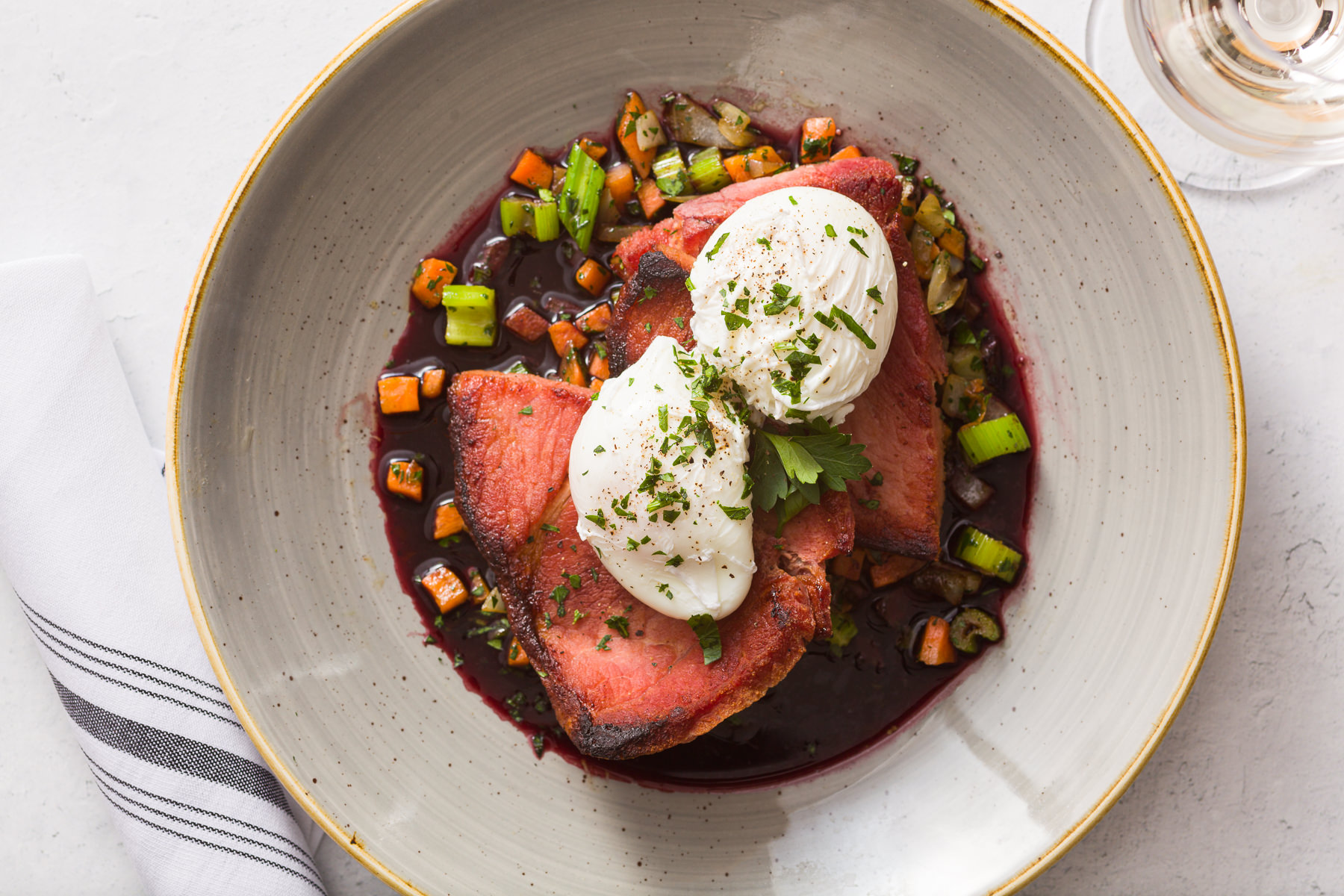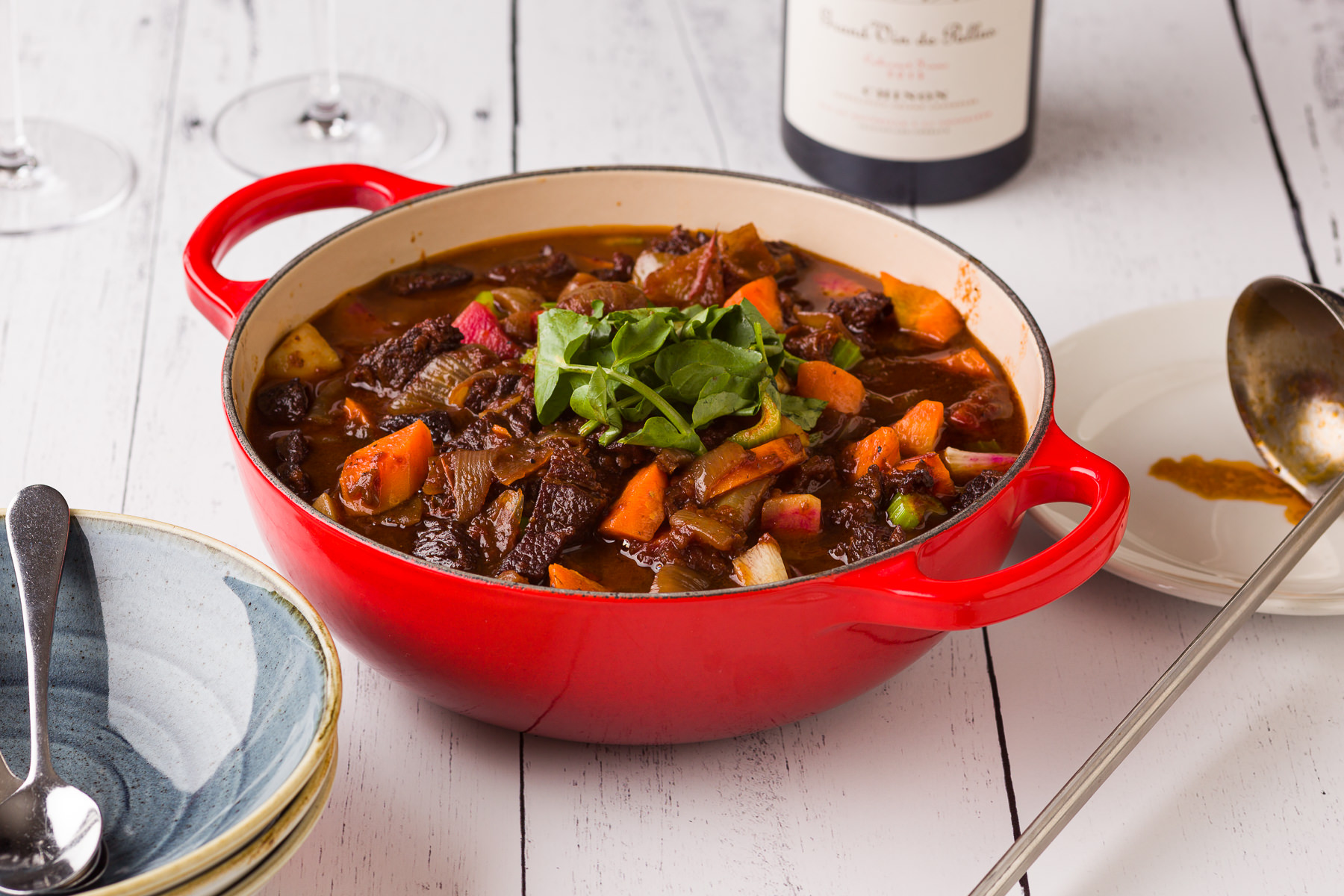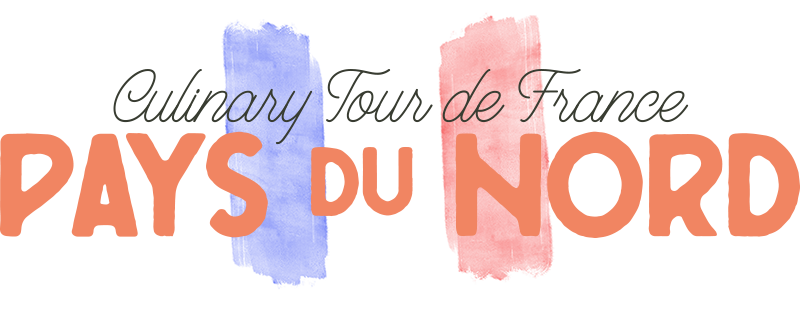
Cadre has now finished its survey of Eastern France and for the next few weeks will be exploring Northern France west of the Ardennes and above the Loire River, beginning with the Flemish and Walloon Nord (“North”) region along the Belgian border. This week’s menu explores the regional inland pays of Artois, Flanders, Hainaut, and Thiérache whose historical identities and dialects are equally Belgian as they are French.
The landscape here is a diverse mixture of marshland, woodland, orchards, and pasture, all crisscrossed with waterways and hedgerows; this diversity lends itself to vitality in the cuisine of Nord, which combines hearty food with bold, fresh herbs and flavors, and although this region is known better for its beers, ciders, and distilled spirits, nearby coastal ports and trade routes from inland Europe bring a diversity of products to the region.
Please enjoy this spring-facing meal and stay warm with your loved ones.
Happy Valentine’s Day!
Bone Marrow Butter with Baguette
Bone marrow might just be the most visceral food, one which deserves closer consideration.
Why does your dog love those beef bones you bring home? It’s the marrow. They’ll naw and lick the ends clean to get every bit of it. Predators and early humans alike recognized the immense nutritional value of marrow bones, rich in fat, protein, and collagen; some anthropologists have even suggested that the development of better cutting and sawing tools was spurned by the desire to more easily access the marrow. Even later, cooking revealed marrow’s importance as a natural source of gelatin, able to clarify and improve the mouthfeel of stocks and stews. Apart from bone broths though, marrow is enjoyed as a spread for bread and condiment for cooked meat, providing a creamy texture and savory, slightly nutty flavor. Here we have combined it with preserved Meyer lemons, lacto-fermented in a salt and sugar solution. Enjoy this refined and primal compound butter with a pinch of fleur de sel.
Duck Liver Pâté
Pâté is a freeform savory paste (not to be confused with a terrine [baked in a mold] or pâté en croûte [baked in a pastry dough]) typically made from liver-only cooked down with vegetables (especially alliums), herbs, spices, and wine or spirits then ground to a smooth, uniform consistency. There are many regional variations of the pâté, using all manner of meat, ingredients, and formats. This version was made with un-fattened duck liver (read: not foie gras) and includes a gelatin cap made with a tawny port. The reason for the cap is multiple: To provide some color and aesthetic appeal to the pale pâté, as well as to protect it from oxidation, and to provide complementary flavors that would typically be provided by additional garnishes, such as sour cherries, nuts, or dried fruit.
Root Vegetable Salad
This palate-cleansing salad combines vegetables found in four corners of France: Anise-forward fennel from the Mediterranean, the root cellar vegetable kohlrabi found in Le Grand Est, apple and hard cider found in the Nord, and orange-blossom water found in Corsica. The latter ingredient along with rose water has been popping up as a key ingredient in many pastries recipes during our research and we are excited to continue employing them in future dishes. Next week we will double down on apples and cider when we visit Normandy.
Spring Lamb with Crimson Lentils
Brittany and Picardy are noted for their lambs, whose coastal pastures are some of the best in France. Boulogne too in Nord-Pas-Calais is known for its fine pastures, often situated in or near one of the many national parks in the area. For this meal, we are sourcing lamb from our favorite producers, Krome and Julie Burke-Scoll at Straight Forward Farms in Avoca, Wisconsin. These two have truly taught us the meaning of animal husbandry, showing an unparalleled level of attention, care (and humor) for their farm, its grass, and its animals. We encourage you to find them on Instagram (@straightforwardfarm) and follow along as they are currently in the middle of lambing season. Their spring lamb chops are served with a juniper lamb sausage (also Krome’s recipe) on a bed of lentils, in this case, a shelled variant of the Champagne brown lentil, with pink or crimson cotyledon, along with spring white asparagus and puréed sunchokes. Enjoy with a bottle of Bandol or Côtes du Rhône.
White Fish with Belgian Endive
For this dish, we focused on using whole filets of locally sourced Lake Superior whitefish paired with three common ingredients found in the region. First, the endive is a go-to vegetable in the area for multiple reasons; the root is used to make the coffee-substitute chicory (also the name used for the whole plant in England and USA) and in fact, the most well-known brand, Leroux, is made here. The leaves of wild endive are green and exceptionally bitter but at some point, the witloof (“white leaf”) version was developed in this region by sprouting the plant in the dark, which like cardoons, lessens the concentration of bitter flavors. Potatoes are also a staple ingredient in this region, often served in a mashed form or an unrolled version of the gnocchi seen here. Finally, gin is used to cure imported pomegranate seeds, because this region of France is notable for its high rates of consumption of beer, cider, eau-de-vies, and genièvre (Dutch-style gin). Other notable fish dishes of the Flemish Nord include eel, the freshwater stew known as waterzooi, terrine-style potjevlesch (pot of flesh), and Nordic-influenced pickled herring (which we’ll be serving a variant of next week).
Bête Noire Cake
Literally translated to “Black Beast”, this dense flourless chocolate cake is coated with dark chocolate ganache that makes it similar to a chocolate truffle. Paired with the cake is a fresh jam made from Clear Creek Cranberry Liqueur and fresh raspberries. Chef Evan Dannells and Sous Chef/Pâtissier Tyler Sundby call this their go-to chocolate cake and have been making it in multiple variations for years. A fun linguistic side note about the name is that “Bête” is a French slang term for “idiot” that can be affectionately used for your loved ones.
Belgian Beignets
Finally, ranking up there with “Is a hotdog a sandwich?” is another hotly debated question in Cadre’s kitchen, “Is a beignet a doughnuthole?” Some research points to the conclusion that dough balls fried in oil began during Greco-Roman times and that many distinct regional variations exist (notably in New Orleans) but that the primary difference is whether one uses an unleavened pâte à choux French dough or a cake-style Berliner yeasted doughnut. To add to this confusion, beignets are often enjoyed during festive occasions in Belgian with fillings of chopped fruit and nuts. Taking a cue from this development and the Ponchiki (from Destination Cadre: Russia) which used tvorog in a yeasted batter, we have added a fromage blanc, or fresh farmer’s cheese, to our sourdough beignet base which keeps it moist and adds a subtle sour finish…“Je suis un Berlinois?”


